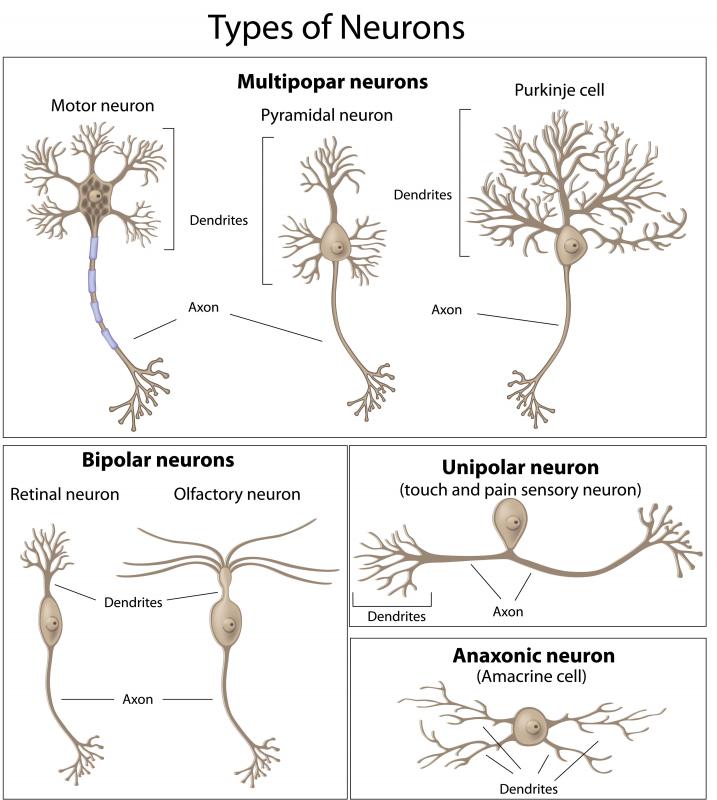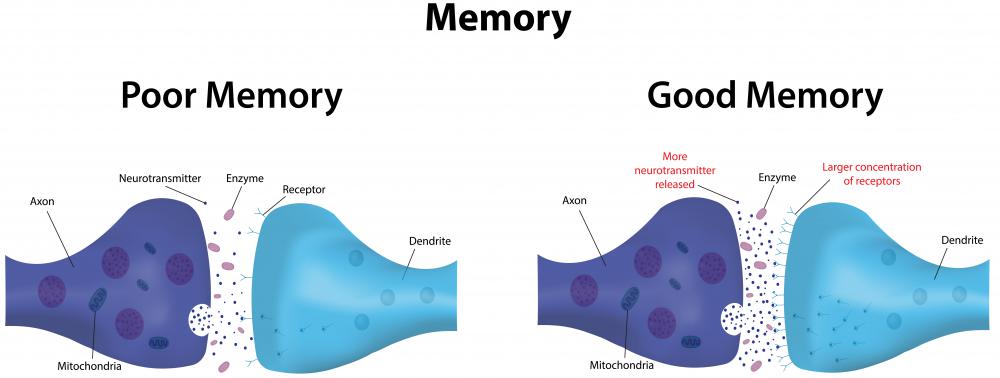At WiseGEEK, we're committed to delivering accurate, trustworthy information. Our expert-authored content is rigorously fact-checked and sourced from credible authorities. Discover how we uphold the highest standards in providing you with reliable knowledge.
What Is the Structure of a Neuron?
Neurons are tiny structures found throughout the body that transmit information in the form of electrical signals. There are several different types of neurons, which are constructed differently but share the same basic structures, such as a cell body and axon terminals. The cell body is responsible for all the basic processes that go on within the neuron, and the other structures are responsible for receiving, carrying, and transmitting the signals.
Multipolar interneurons, along with sensory and motor neurons, share the same basic structure put together in different ways. Each type has a cell body that contains smaller structures similar to those found in other cells. The nucleus contains all of the genetic information needed to keep the cell functioning properly. Also in the cell body are the energy-creating mitochondria, the protein packaging and storing Golgi complex, and protein manufacturing ribosomes. The cell body is connected to the other structures in the neuron by microtubles, which transport materials including the cellular components necessary for the neurons to send and receive signals.

The signals are received into the neuron by structures called dendrites, which contain receptors for the neurotransmitters released by adjoining neurons. These fibrous structures are generally found in bunches at one end of the neuron. Once the signal is received, it goes into the neuron and travels in the direction of the cell body. As each dendrite can receive a signal from another neuron, the structure of a neuron makes it possible that hundreds to thousands of signals are received into the neuron at once.

Once the signal encounters the cell body, it is then transferred to the axon. The axon is the longest structure of a neuron, a slender filament that is generally responsible for sending the signal over a distance and is characterized by the function of carrying the signal away from the cell body. In sensory neurons, there are two axons, one leading toward the cell body and one leading away from it.

At the end of the structure of a neuron are the axon terminals. The tips of these structures are filled with tiny cells called synaptic vesicles, which receive the signal and are then released into the space between the axon terminal and the dendrites of the next neuron. The entire process of transmitting a signal takes only a fraction of a millisecond.

The structure of a neuron can be slightly different, depending on the type. Sensory neurons have receptor cells at the opposite end from the axon terminals, while the axon terminals of a motor neuron end in muscle cells. These two types of neurons also have axons protected by a layer called a myelin sheath. There are also two types of multipolar interneurons, characterized by the presence of either long and spindly dendrites or shorter, more compact groupings.
AS FEATURED ON:
AS FEATURED ON:














Discuss this Article
Post your comments